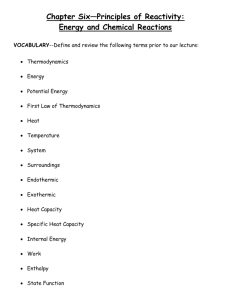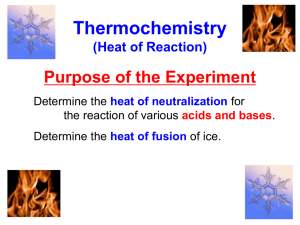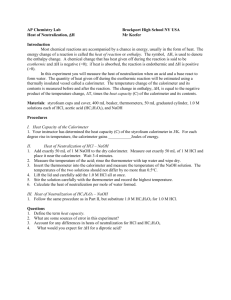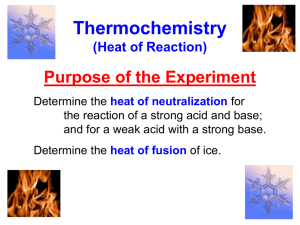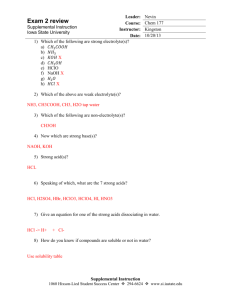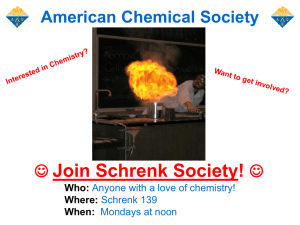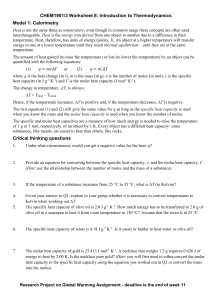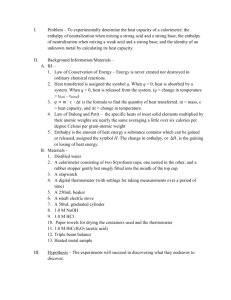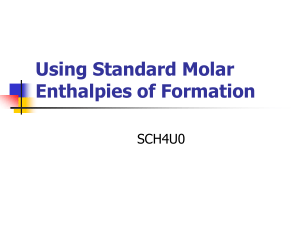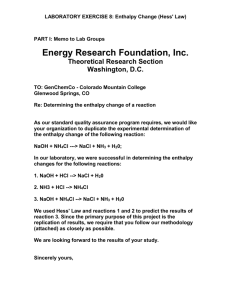Thermodynamics: Enthalpy & Calorimetry Worksheet
advertisement
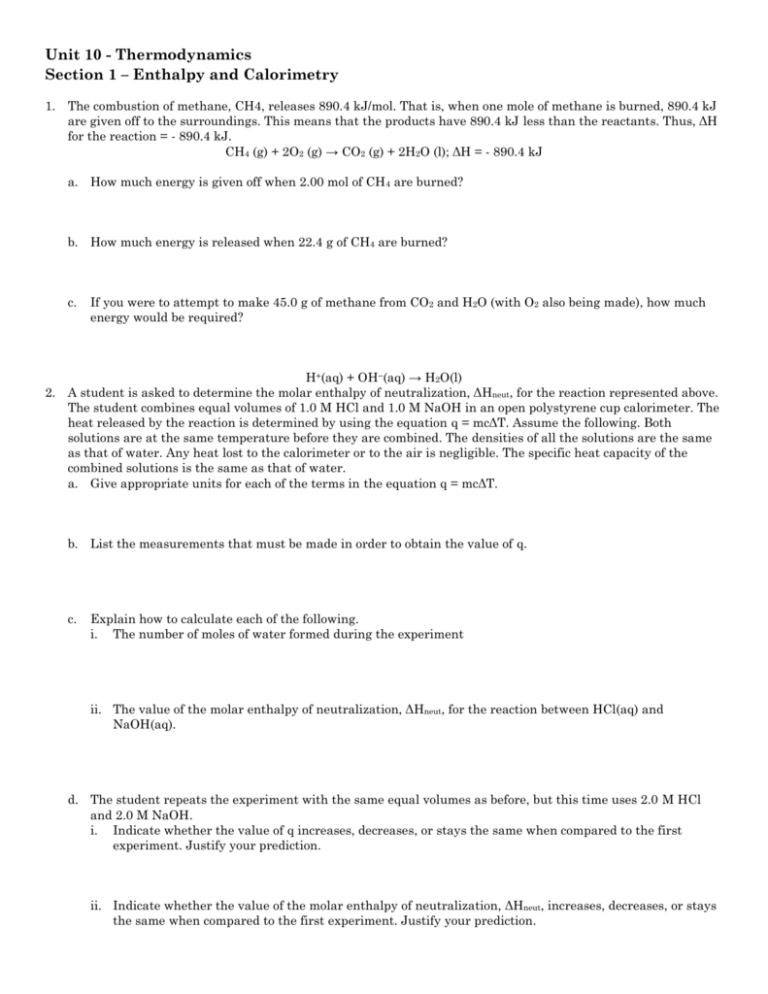
Unit 10 - Thermodynamics Section 1 – Enthalpy and Calorimetry 1. The combustion of methane, CH4, releases 890.4 kJ/mol. That is, when one mole of methane is burned, 890.4 kJ are given off to the surroundings. This means that the products have 890.4 kJ less than the reactants. Thus, ΔH for the reaction = - 890.4 kJ. CH4 (g) + 2O2 (g) → CO2 (g) + 2H2O (l); ΔH = - 890.4 kJ a. How much energy is given off when 2.00 mol of CH4 are burned? b. How much energy is released when 22.4 g of CH4 are burned? c. If you were to attempt to make 45.0 g of methane from CO2 and H2O (with O2 also being made), how much energy would be required? H+(aq) + OH−(aq) → H2O(l) 2. A student is asked to determine the molar enthalpy of neutralization, ΔHneut, for the reaction represented above. The student combines equal volumes of 1.0 M HCl and 1.0 M NaOH in an open polystyrene cup calorimeter. The heat released by the reaction is determined by using the equation q = mcΔT. Assume the following. Both solutions are at the same temperature before they are combined. The densities of all the solutions are the same as that of water. Any heat lost to the calorimeter or to the air is negligible. The specific heat capacity of the combined solutions is the same as that of water. a. Give appropriate units for each of the terms in the equation q = mcΔT. b. List the measurements that must be made in order to obtain the value of q. c. Explain how to calculate each of the following. i. The number of moles of water formed during the experiment ii. The value of the molar enthalpy of neutralization, ΔHneut, for the reaction between HCl(aq) and NaOH(aq). d. The student repeats the experiment with the same equal volumes as before, but this time uses 2.0 M HCl and 2.0 M NaOH. i. Indicate whether the value of q increases, decreases, or stays the same when compared to the first experiment. Justify your prediction. ii. Indicate whether the value of the molar enthalpy of neutralization, ΔHneut, increases, decreases, or stays the same when compared to the first experiment. Justify your prediction. e. Suppose that a significant amount of heat were lost to the air during the experiment. What effect would this have on the calculated value of the molar enthalpy of neutralization, ΔHneut? Justify your answer. 3. In an experiment, a sample of an unknown, pure gaseous hydrocarbon was analyzed. Results showed that the sample contained 6.000 g of carbon and 1.344 g of hydrogen. a. Determine the empirical formula of the hydrocarbon. b. The density of the hydrocarbon at 25oC and 1.09 at is 1.96 g L-1. i. Calculate the molar mass of the hydrocarbon ii. Determine the molecular formula of the hydrocarbon 4. In an experiment, liquid heptane, C7H16 (l), is completely combusted to produce carbon dioxide gas and liquid water, as represented by the following equation: C7H16(l) + 11O2(g) 7CO2(g) + 8H2O(l). The heat of combustion, ΔHocomb, for one mole of C7H16(l) is -4.85 x 103 kJ. a. Using the information in the table below, calculate the value of ΔHof for C7H16 (l) in kJ mol-1. Compound CO2 (g) H2O (l) ΔHof (kJ mol-1) -393.5 -285.8 b. A 0.0108 mol sample of heptane is combusted in a bomb calorimeter. i. Calculate the amount of heat released to the calorimeter. ii. Given the total heat capacity of the calorimeter is 9.273 kJ oC-1, calculate the temperature change of the calorimeter.
